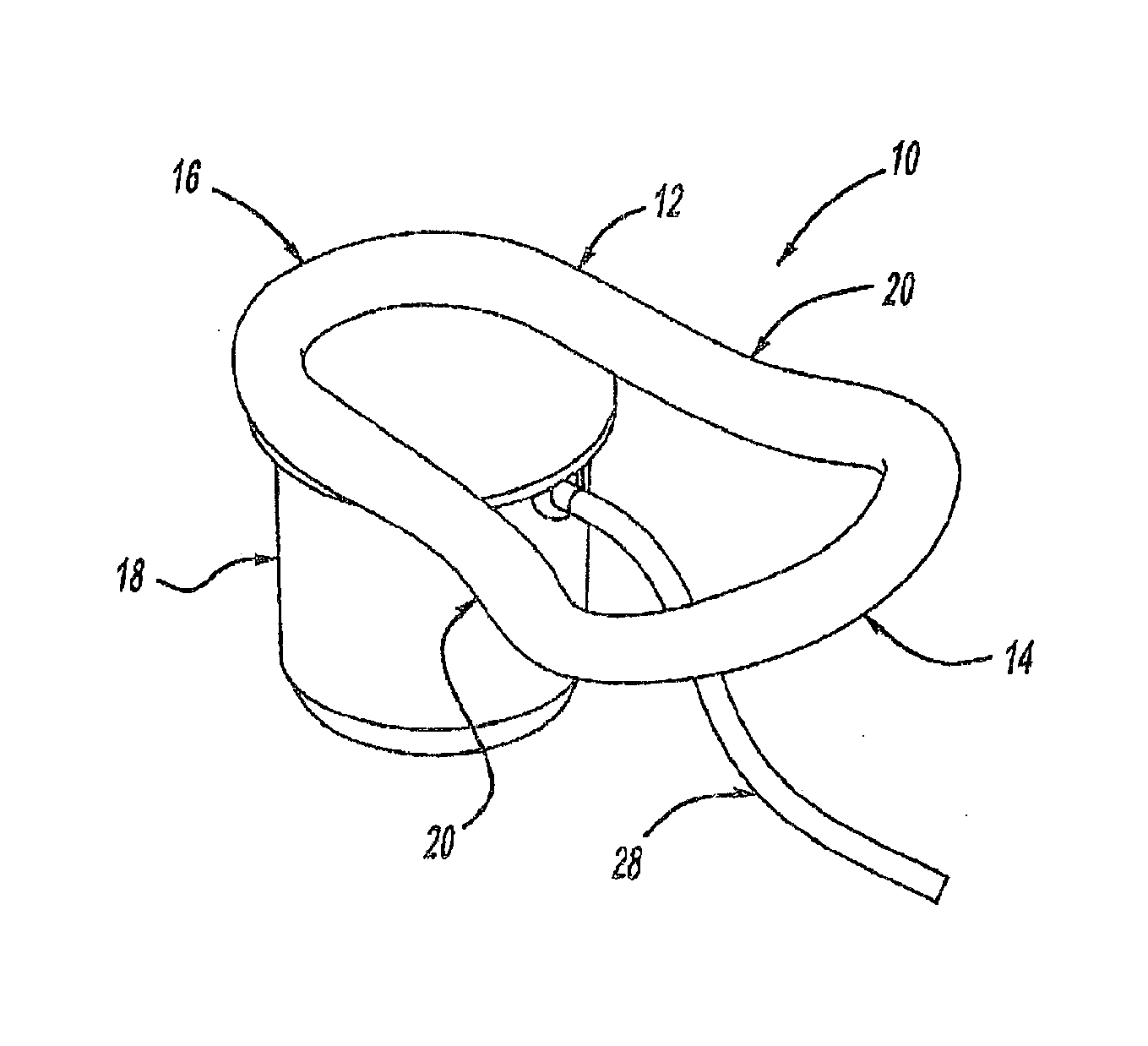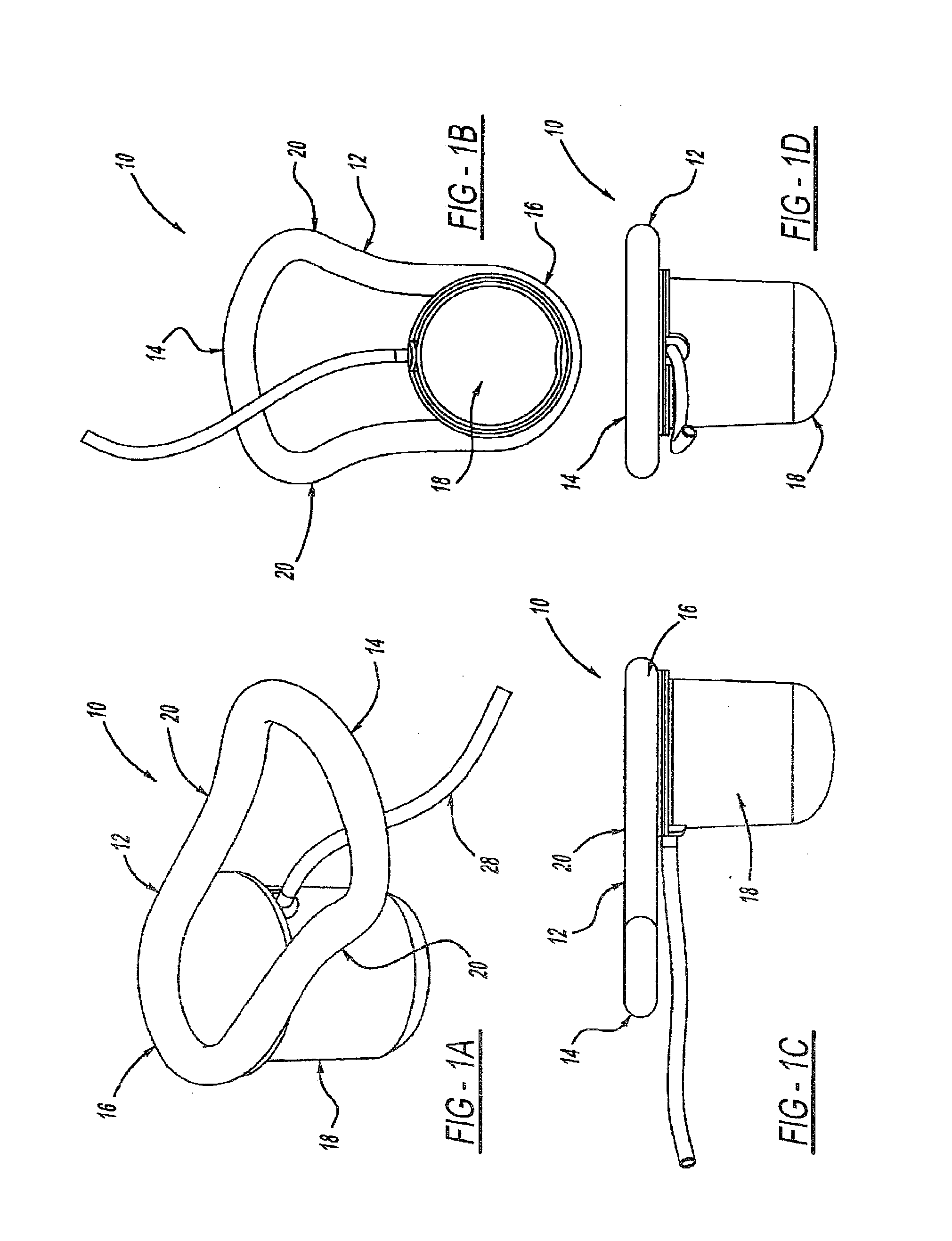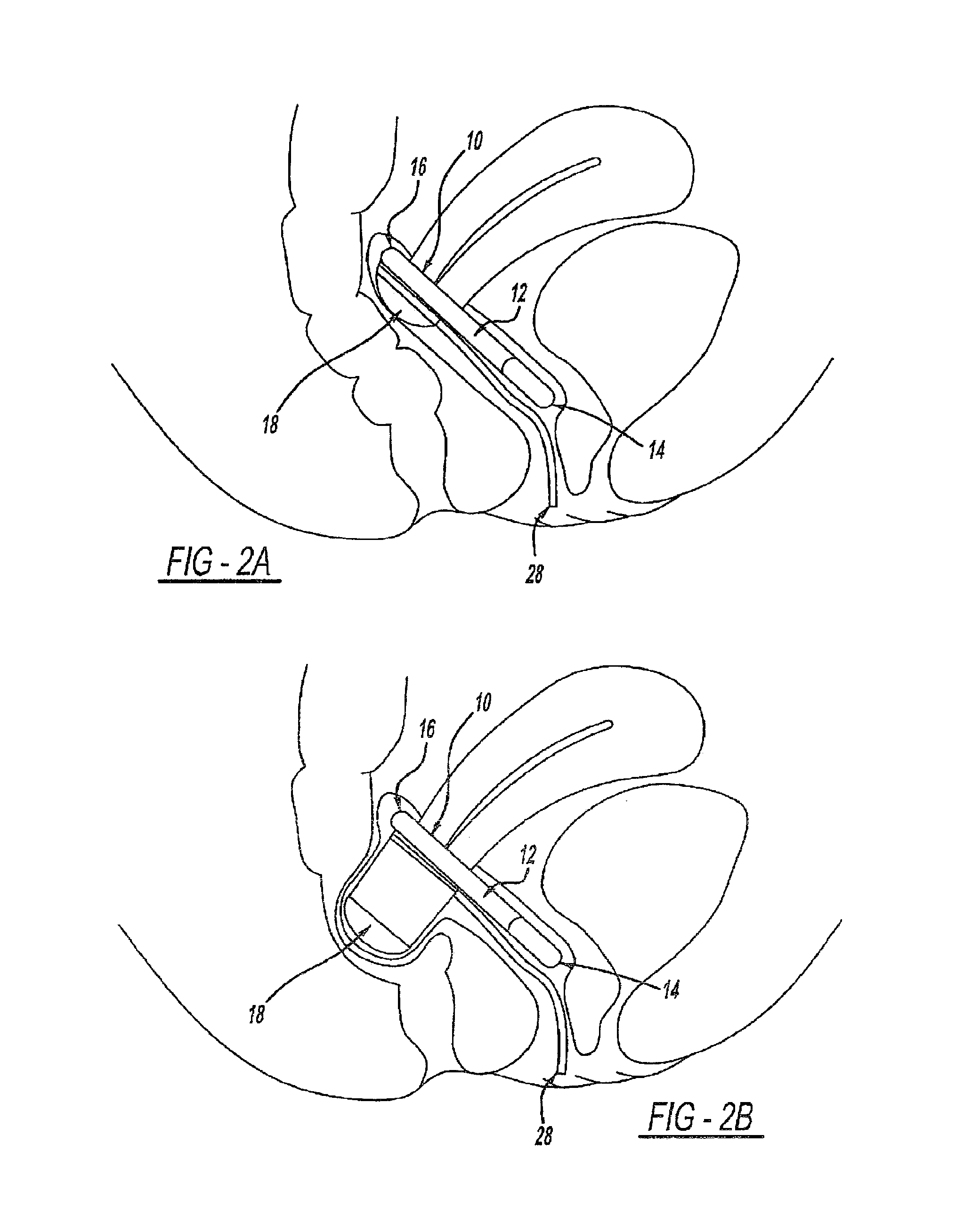Intra-Vaginal Device For Fecal Incontinence
a technology of incontinence and intravaginal tube, which is applied in the field of intravaginal tube, can solve the problems of reducing the quality of life of patients, difficult to treat conditions, and many previous treatments that have failed, and achieves the effect of preventing the expansion of the patient's rectum and preventing the passage of stool
Inactive Publication Date: 2016-01-07
PELVALON
View PDF6 Cites 0 Cited by
- Summary
- Abstract
- Description
- Claims
- Application Information
AI Technical Summary
Benefits of technology
The device provides stable and comfortable control over stool passage by minimizing tension on vaginal walls, allowing for effective occlusion with minimal force and repeated use, addressing the limitations of existing devices in stability and tissue stress.
Problems solved by technology
The disease is psychologically and emotionally devastating, causing those afflicted to avoid going out in public and greatly reducing their quality of life.
With no good treatments, most patients are left to cope with the disease wearing diapers.
This damage can immediately result in symptoms, or symptoms can not manifest until later in life.
Many women with FI have multiple defects in their continence mechanisms, making it a very difficult condition to treat.
This is one of the reasons why many treatments have previously failed, as they only work to address a single cause (e.g. sphincter tears or nerve damage).
Conservative attempts to control fecal incontinence, including dietary changes and physical therapy have been largely unsuccessful.
Such treatments have shown poor results, likely because they are fundamentally static devices and cannot achieve a dynamic and controllable function like a healthy sphincter.
Such devices have better dynamic range, but their invasive nature has led to infection, erosion, and removal rates.
As a result, very few such procedures are performed.
Further, it discusses nothing that could fit stably in the vagina in order to control the rectum.
A major drawback of Klingenstein's device is the means provided for stabilizing the device, which is essential to carry out the desired functionality.
Klingenstein describes wings external to the vagina, which would be uncomfortable and cumbersome for patients.
It was discovered in Applicants' cadaver studies, that an intra-vaginal device where securing relies on expansion is inherently unstable when the device is unexpanded.
It was further discovered that when such devices transition from unexpanded to expanded states, their positioning and directionality is variable and unpredictable.
This is especially problematic when the goal is to use the vaginal device to apply a directed force to the rectum.
For one, if the device is inserted in an unexpanded state, it makes it difficult to reliably expand to apply a force on the right spot.
In these cases, as is the case initially, the instability upon deflation would make it difficult to re-expand in the right position.
Another drawback to the stability of Klingenstein's device is that it is a tubular device, more specifically defined as generally cylindrical.
Another major drawback of Klingenstein's device is that it lacks body means to allow easy force transfer from the vagina to the rectum.
If a device is not designed to allow redundancy (or slack) in the vaginal wall in the area where the force is transmitted to the rectum, then the tension in the wall makes it difficult to transfer the force posteriorly.
Klingenstein does not teach any art that would allow for such vaginal slack in the area where his device transmits force to the rectum.
None of these intra-vaginal devices are designed to be able to apply a directed force towards the rectum, let alone the ability to do so stably, repeatedly and with minimal force.
Such a device has not previously been conceived, and as a result there are no such devices in the market place and, more generally, no viable treatment for the millions of women suffering from fecal incontinence.
Method used
the structure of the environmentally friendly knitted fabric provided by the present invention; figure 2 Flow chart of the yarn wrapping machine for environmentally friendly knitted fabrics and storage devices; image 3 Is the parameter map of the yarn covering machine
View moreImage
Smart Image Click on the blue labels to locate them in the text.
Smart ImageViewing Examples
Examples
Experimental program
Comparison scheme
Effect test
example 2
[0136]The following are manufacturing instructions for assembling the device.
[0137]Apply Silicone Adhesive to Springs.
[0138]Insert Wire forms into Springs and cure adhesive.
[0139]Insert assembly into outer tubing.
[0140]Bond free ends of tubing together and cure adhesive.
[0141]Bond inflation tube and balloon bottom to balloon, cure assembly.
the structure of the environmentally friendly knitted fabric provided by the present invention; figure 2 Flow chart of the yarn wrapping machine for environmentally friendly knitted fabrics and storage devices; image 3 Is the parameter map of the yarn covering machine
Login to View More PUM
 Login to View More
Login to View More Abstract
An intra-vaginal device for the control of stool passage, including a body mechanism for securing the device around the area of the pubic notch and in the area of the posterior fornix, the body mechanism including a force applying mechanism for reversibly applying a force to a posterior portion of the vagina to occlude the rectum. A method of controlling the passage of stool in a patient, by inserting an intra-vaginal device into the patient's vagina such that an anterior end rests around the pubic notch and a posterior end rests in the posterior fornix, exerting a force towards the posterior side of the vagina, moving an anterior wall of the patient's rectum towards the posterior wall of the rectum with the force applying portion, impeding the passage of stool, and removing the force, allowing stool to pass.
Description
CROSS-REFERENCE TO RELATED APPLICATIONS[0001]This application is a continuation of U.S. application Ser. No. 13 / 635,598, filed on Sep. 17, 2012, which is the U.S. National Phase of International Application Serial No. PCT / US2011 / 028691, filed on Mar. 16, 2011, which claims the benefit of U.S. Provisional Application Ser. No. 61 / 367,418, filed on Jul. 25, 2010 and U.S. Provisional Application Ser. No. 61 / 314,335, filed on Mar. 16, 2010.TECHNICAL FIELD[0002]The present invention relates to intra-vaginal devices. More specifically, the present invention relates to intra-vaginal devices for the control of stool passage.BACKGROUND OF THE INVENTION[0003]Fecal incontinence (FI), or the inability to control bowel movements, is an immense unmet clinical need, especially among women, who are 9 times more likely to suffer from the disease than men. While stigma surrounding the disease has masked the prevalence of the condition for decades, recent community-based studies estimate that up to 17 ...
Claims
the structure of the environmentally friendly knitted fabric provided by the present invention; figure 2 Flow chart of the yarn wrapping machine for environmentally friendly knitted fabrics and storage devices; image 3 Is the parameter map of the yarn covering machine
Login to View More Application Information
Patent Timeline
 Login to View More
Login to View More Patent Type & Authority Applications(United States)
IPC IPC(8): A61F2/00
CPCA61F2/0022A61F2/0013A61F2/005A61F6/08A61F2/0009
Inventor HERBOWY, STEVEN LAWRENCEROSEN, MILES HARRISBRENNER, JACOB SAMUEL
Owner PELVALON
Features
- R&D
- Intellectual Property
- Life Sciences
- Materials
- Tech Scout
Why Patsnap Eureka
- Unparalleled Data Quality
- Higher Quality Content
- 60% Fewer Hallucinations
Social media
Patsnap Eureka Blog
Learn More Browse by: Latest US Patents, China's latest patents, Technical Efficacy Thesaurus, Application Domain, Technology Topic, Popular Technical Reports.
© 2025 PatSnap. All rights reserved.Legal|Privacy policy|Modern Slavery Act Transparency Statement|Sitemap|About US| Contact US: help@patsnap.com



